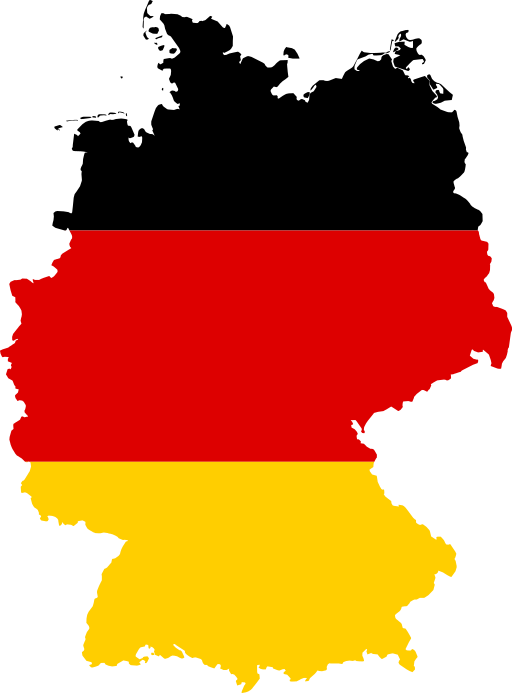Country profile: Germany
In 2014, the total German food market was worth 186.6 billion euros, but it sees fierce competition because about three quarters of the food market is dominated by the 5 largest retailers, the association of the German food industry (BVE) reports. The total food market amounted to a value of 186.6 billion euros in 2014. Food is largely sold through the retail channel and Edeka, the Schwarz group (Lidl, Kaufland), Rewe, Aldi and the Metro Group, held a 25.2 %, 14.8 %, 14.8 % 12.1 % and 5.8 % percent share of the food sales respectively in 2014. The price level of food has gone up a little. BVE reports that in November 2015 on average prices for food were up 0.2 % compared to October 2015 and rose 1.8 % compared to November 2014. Organic fresh produce is a long-time favourite of the German people and the popularity of organics is still rising, reports AMI (German agricultural information company). They indicate that in both consumption and production, the Germans are frontrunners where it comes to organic products. However, demand is rising stronger than production can keep up with, creating a need for more organic imports.
Imports
With a volume of 8.1 million tons, Germany is the second largest market—after the US with 16.7 million tons—for fresh fruit and vegetables. Russia tumbled from second to third place due to decreasing imports following the ban, reports Fruit&VegetableFacts. Germany’s annual production of open field vegetables amounts to 3.5 million tons and that is quite substantial. As for sheltered vegetables, the German production of 150,000 tons is relatively modest. German production of fresh produce can still only meet a portion of domestic demand and many imports are needed to satisfy the fresh produce market. Total fresh produce imports amounted to 8.1 million tons in 2014, a drop of 4.3 % compared to 2013; the total value in 2014 reached 8.9 billion euros. Fruit imports fell more sharply (by 5.3 %) than vegetable imports (-2.7 %). Although there are annual variations in the imported volume of fresh produce, the overall volume is more or less stable above 8 million tons. The top 5 imported products together form 44 % of the import volume: bananas (17 %), tomatoes (9 %), apples (7 %), cucumbers (6 %) and oranges (5 %). The lion share of fresh produce imports are sourced from other European Union member states with Spain (30 %), the Netherlands (17 %) and Italy (12 %) as the most important EU importing partners for Germany. However, trade partners from outside the EU have a place in the top 5 foreign supplies: Ecuador and Costa Rica supply 7 % and 5 % respectively of Germany’s imported volume.
Exports
Although known as a major importer of fresh fruit and vegetables, German fresh produce exports still have a volume of over a million tons. Since 2010, the fresh produce market has seen a gradual decrease in exported volume. Whereas in 2010 there were 1.3 million tons still exported, that fell by 15.4% to 1.1 million tons in 2014. The top 5 (re-) exported products are: bananas, onions, apples, cabbages and cucumbers. In 2014, the latter product managed to gain 8 % in volume compared to 2013. Cauliflower seems to be slowly but steadily expanding its exported volume, too. In 2011, there were 17,000 tons exported, but 20,000 tons in 2014. Most of the exported fresh German produce is sold to EU member countries, 95.7 %, with neighbouring countries the Netherlands, Austria, Czech Republic, Poland and Denmark as the largest importers.
Production
Production year 2014 was a good one for German farmers in terms of volume. Total production of open field vegetables rose by 9.2 % to a total of 3.5 million tons.
Carrots (609,000 tons), onions (500,000 tons), white cabbage (478,000 tons), different types of lettuce (298,000 tons) and pickles (198,000 tons) are the most important crops produced. In 2014, with a total of 609,000 tons, the carrot harvest surpassed 600,000 tons for the first time. The special love affair the Germans have with asparagus is becoming even stronger, with production steadily increasing. Whereas in 2010 there were 92,000 tons of asparagus produced, that rose by 23.9 % to 114,000 tons in 2014. That was also the first year that professional asparagus production was implemented on more than 20,000 hectares. And the prospects are good. In 2014 there were still more than 5,000 hectares not yet in production. In covered production, the tomato sets the pace with total production of 69,258 tons in 2013. Cucumber production is also considerable with 50,468 tons. The third largest covered crop is pepper. With production of 7,515 tons in 2013, it is considerably smaller but shows remarkable growth of 43 % compared with 2012.
Overall, German fruit production in 2014 saw growth. The volume of apples increased by 27 % to 1 million tons compared to 2013. At the same time, the apple acreage fell slightly by about 1 %. Another remarkable result comes from sweet cherries. In 2014, there were 60 % more produced than in 2013, on about 0.3 % less acreage.
GERMANY:
- Population (hab.): 81 million (Jul 2015 est.)
- Total area (km2): 357,022 sq km
- GDP: $3,748 (2014 est.)
- Trade balance: $304 billion (2014 est.)
- Inflation rate – consumer prices (%): 0.8% (2014 est.)
- Growth rate (GDP real growth rate %): 1.6% (2014 est.)
Source: CIA World Factbook



